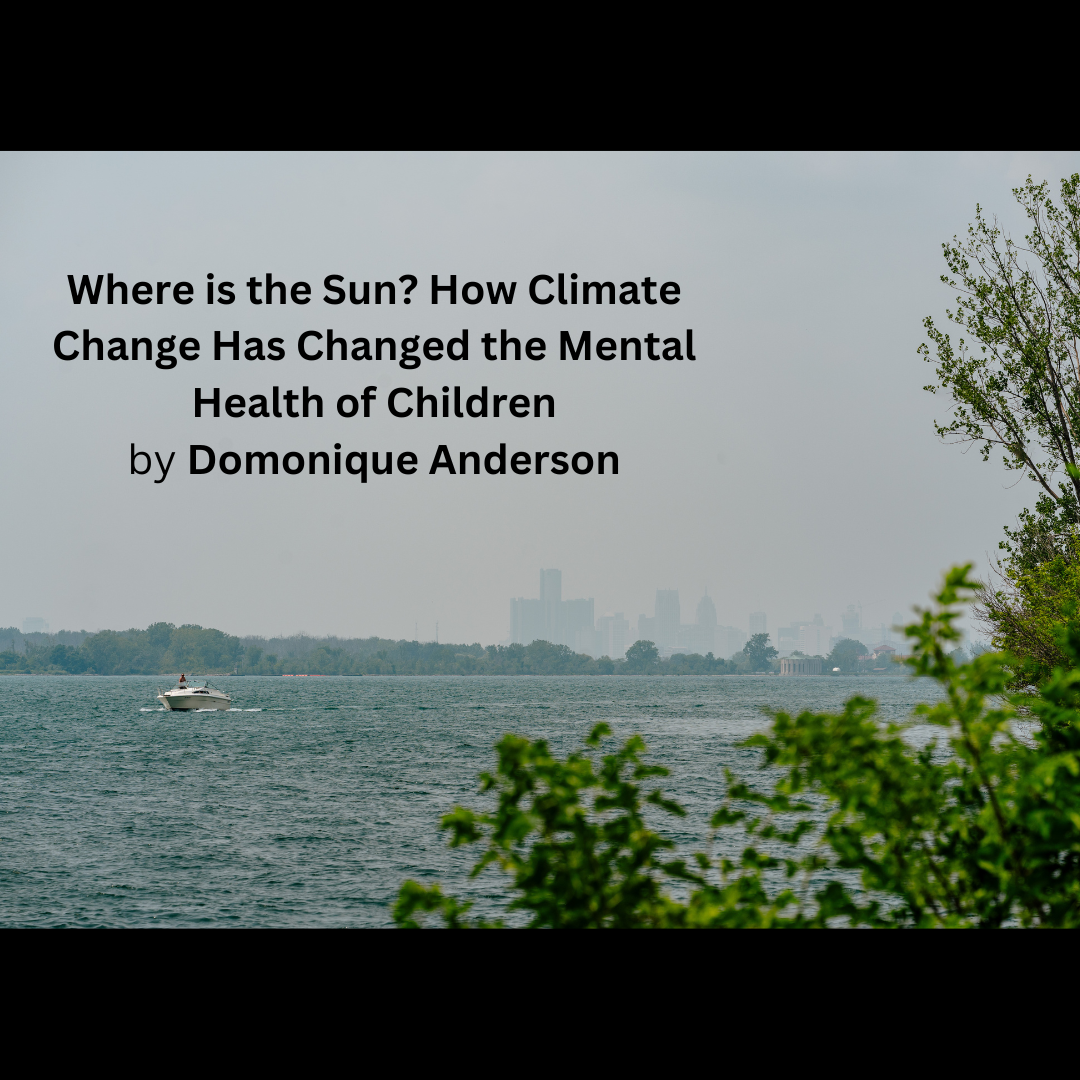On June 26, 2023, the sky did not look right. It was red, full of smoke, and you could not see the sun. There was an alert for high air pollution and people needed masks to stay safe. People lucky enough to have air conditioning ran it day and night for two days. Everyone was warned to stay indoors. Children, once again, had to be isolated in the house for 48 hours. All after-school activities shut down immediately. It was a scary day. I remember that day. My child asked me where the sun was–and I had no explanation.
Children wonder, “What is going on in our world?” It is no secret that we are living in the midst of a climate crisis. With fires happening in Canada and smoke migrating to Michigan, it has been a challenge to talk with children who have been traumatized by the shutdown of COVID-19. The rise of anxiety and fear has increased in adolescents 5-12 in the last three years. Suicide, depression, and oppositional behaviors are a result of the changes that are happening to our children. To not be able to go outside and play is hard. To know that the air you are breathing is not good for you and to have to mask is hard as well. And, when these issues dovetail with our innate biological needs for a balanced environment and access to the sun, the problems only multiply.
SAD-Seasonal Affective Disorder comes when there is a change in seasons from warm to colder weather. With the climate changing drastically, there has been a rise in depression in children due to their brain not grasping what is happening around them. The newest term is Climate Anxiety. Climate Anxiety can lead to symptoms such as panic attacks, loss of appetite, irritability, weakness, and sleeplessness. Given the evidence about the impact of climate change on health, psychological professionals are asking if their patients feel too much anxiety, or whether they themselves feel too little (Dodds, 2021).
People with less money and resources are disproportionately affected by climate change. Severe weather events damage social support systems and mental health infrastructure, further isolating the most vulnerable. Susan Clayton reports that anxiety, fatalism, hopelessness, and fear have been increasing globally, and offers a clinical approach to understanding, measuring, and treating climate anxiety. She makes a distinction between adaptive and maladaptive responses and emphasizes the need to keep society-level changes to combat climate change in mind.
With this increased anxiety, a good practice is to have a conversation with your children. Let them know how to protect themselves, but also try to refocus their mind on positive things such as family games, quality time, and dance parties. It is important to emphasize the joys and values of life. Using mindfulness practices, yoga, and other self-care techniques help the children learn how to calm their minds and gives them a sense of control over their feelings. Having open discussions about mental health, feelings, and concerns is a good practice for families.
The mental health crisis in our nation is at an all-time-high. Children are suffering the most because they do not understand and do not have a positive outlet when their world is turned upside down. As adults and caregivers, we must create safe spaces for them to grow, express their fears, and develop ways to continue to thrive. We need to engage in conversations that help them understand the nature of the crises we face and to engage with them in the efforts to change our reality. We need to be open to therapy for the children and recognize that sometimes anxieties, while justified, can be debilitating and terrifying to children.. We also need to create times and places for fun activities to engage their minds and help guide them to adapt to the change in a positive way. We need the sun to come back to light up our children and our world.
Detroit native Domonique Anderson is a Clinical Psychologist. She loves nature, fighting for justice, and strengthening our community through unity and peace. She is a wife, and mother of four and loves to do karaoke in her spare time. She has worked in child welfare for 6 years and believes in helping to cultivate the true authentic person at the core. She loves her city and advocates for mental health resources for the community because she knows it will take a village to create the peace we need.


